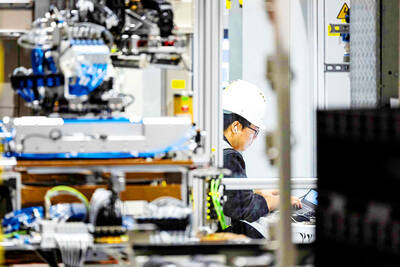Taiwan and its ally Nicaragua yesterday inked a free trade agreement (FTA) in the hope of boosting bilateral trade and economic cooperation between the two countries.
The FTA -- signed by Minister of Economic Affairs Morgan Hwang (
Steve Chen (
Nicaragua is Taiwan's third FTA partner, after Panama and Guatemala, while Taiwan is the first Asian country Nicaragua signed a free-trade pact with.
Under the terms of the Taiwan-Nicaragua FTA, 3,374 categories, or 51.1 percent of Taiwanese exports to Nicaragua will be duty free, while 5,797 categories, or 65.6 percent of Nicaraguan imports to Taiwan will enjoy zero tariff as well.
The duty free measure will extend to 95.1 percent of Taiwanese exports to Nicaragua, and 97.3 percent of Nicaraguan goods to Taiwan 15 years after the effective date.
A major benefit carried by the agreement is it would allow Taiwan to tap into the Central and North American markets, as the US-Nicaragua FTA through the Central American Free Trade Agreement went into effect on April. 1, Hwang said at the signing ceremony.
By investing in Nicaragua, Taiwanese companies can sell their goods to Central America and the US, Canada and Mexico, where they enjoy zero tariffs or preferential customs rates, Chen said.
Chen cited textile manufacturing as a business worth developing in the Central American country, as Nicaragua enjoys tariff-free, instead of the regular 32 percent levy, exports to the US in this category.
Taiwanese companies have invested US$220 million in Nicaragua, with textiles making up the bulk of the investment, Chen said after the signing ceremony, quoting government data.
Nicaragua is Taiwan's 99th largest trade partner with bilateral trade reaching US$46.27 million last year, according to government statistics. Of the amount, exports accounted for US$39.67 million, while imports from Nicaragua only made up US$6.6 million.
The trade volume is expected to pick up after the implementation of the FTA, Chen said.
Government statistics shows that following the signing of the Taiwan-Panama FTA in 2004, bilateral trade between the two countries surged from US$127.17 million in 2003 to US$269.36 million in 2004, and further climbed to US$249.61 million last year.
While Nicaragua expects Taiwan to export more consumer industrial products to the country, it plans to introduce more farm produce such as coffee, sugar, tropical fruit to Taiwan, said the Nicaraguan minister.
As the amount of imports from Nicaragua is small, the market opening will not affect local farmers, Chen said.
Meanwhile, the FTA with Gua-temala, inked last September, will go into effect next month.
The government is also negotiating free trade pacts with El Salvador and Honduras, wrapping up the first round of talks last week. The second round is scheduled to start in the middle of next month and be completed by October, said Chen, the lead negotiator.
After inking FTAs with four of the five Central American countries, Taiwan plans to sign a FTA with Costa Rica, after the US approves the FTA with the country, he added.
The FTAs with Central or South American allies, however, are deemed more symbolic rather than a material boost to Taiwan's international trade. Taiwan has been seeking FTAs with major trade partners such as the US and Japan, but has encountered difficulties owing to opposition from China.

CHIP RACE: Three years of overbroad export controls drove foreign competitors to pursue their own AI chips, and ‘cost US taxpayers billions of dollars,’ Nvidia said China has figured out the US strategy for allowing it to buy Nvidia Corp’s H200s and is rejecting the artificial intelligence (AI) chip in favor of domestically developed semiconductors, White House AI adviser David Sacks said, citing news reports. US President Donald Trump on Monday said that he would allow shipments of Nvidia’s H200 chips to China, part of an administration effort backed by Sacks to challenge Chinese tech champions such as Huawei Technologies Co (華為) by bringing US competition to their home market. On Friday, Sacks signaled that he was uncertain about whether that approach would work. “They’re rejecting our chips,” Sacks

NATIONAL SECURITY: Intel’s testing of ACM tools despite US government control ‘highlights egregious gaps in US technology protection policies,’ a former official said Chipmaker Intel Corp has tested chipmaking tools this year from a toolmaker with deep roots in China and two overseas units that were targeted by US sanctions, according to two sources with direct knowledge of the matter. Intel, which fended off calls for its CEO’s resignation from US President Donald Trump in August over his alleged ties to China, got the tools from ACM Research Inc, a Fremont, California-based producer of chipmaking equipment. Two of ACM’s units, based in Shanghai and South Korea, were among a number of firms barred last year from receiving US technology over claims they have

It is challenging to build infrastructure in much of Europe. Constrained budgets and polarized politics tend to undermine long-term projects, forcing officials to react to emergencies rather than plan for the future. Not in Austria. Today, the country is to officially open its Koralmbahn tunnel, the 5.9 billion euro (US$6.9 billion) centerpiece of a groundbreaking new railway that will eventually run from Poland’s Baltic coast to the Adriatic Sea, transforming travel within Austria and positioning the Alpine nation at the forefront of logistics in Europe. “It is Austria’s biggest socio-economic experiment in over a century,” said Eric Kirschner, an economist at Graz-based Joanneum

France is developing domestic production of electric vehicle (EV) batteries with an eye on industrial independence, but Asian experts are proving key in launching operations. In the Verkor factory outside the northern city of Dunkirk, which was inaugurated on Thursday, foreign specialists, notably from South Korea and Malaysia, are training the local staff. Verkor is the third battery gigafactory to open in northern France in a region that has become known as “Battery Valley.” At the Automotive Energy Supply Corp (AESC) factory near the city of Douai, where production has been under way for several months, Chinese engineers and technicians supervise French recruits. “They